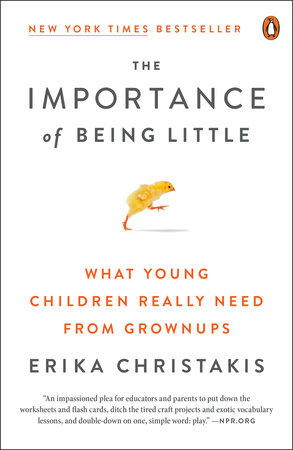5 Tips for Raising Children With Active Imaginations
by Erika Christakis
No matter how old we are, nor how much we’ve seen of the world, our bonds to our fellow humans are woven from the same fiber: imagination. Imagination is what makes empathy possible. Imagination allows us to consider matters from another’s point of view, and to experience another’s joys and sorrows. Especially for young children — whose experiences are brief and narrow, but whose minds are open and curious — imagination is what helps them to first step outside of themselves and explore new personalities and perspectives.
As a director and now lecturer in early childhood education at Yale’s Child Study Center — as well as in my past experience as a preschool teacher—I have watched with concern as test-prep and screen time have replaced make-believe and play in our classrooms, even for the very youngest children. A healthy childhood — not to mention a more compassionate, fulfilling adulthood — depends on a steady diet of imagination. With that in mind, here are five tips to help you open the imagination of your young child.
1. Ask open-ended questions.
Cultivate conversation by making open-ended statements that invite your child to take the lead. “Tell me about your picture” will give you a window into your child’s state of mind more readily than “Oh, that’s a pretty house you’ve made.” Conversation is imagination’s scaffold, but adult speech is often too directive and rushed with young children. Given adequate time to talk, most children will travel deep into their imaginations. Think of conversation as wandering through an unfamiliar forest with your child.
2. Cut back on the cutesy crafts.
Remember those hand-tracings of a Thanksgiving turkey with the “googly” eyes and fluorescent feathers? We all love refrigerator art, but most traditional kindergarten crafts reflect an adult’s idea of what’s “cute” or fun instead of exercising children’s own capacity for self-expression. After story time, try offering children loose parts, such as recyclables or hardware, and see what they can create from their imaginations. Cultivate the habit of thinking creatively: Instead of setting up an art project, take a walk to find materials, asking, “I wonder what we can find today to make a submarine.”
3. Encourage “simple-but-complex” play.
Children use more varied vocabulary and more complex grammar when playing with blocks than they do when using electronic gadgets that are full of gizmos but offer only one play “script.” That’s because when a young child picks up a block and uses it as a cellphone, she is making a giant cognitive leap: One thing can represent something else! Symbolic play of this sort is critical for the development of imagination, and that’s why it’s so important to give children simple-but-complex toys that can be used in multiple ways. Try plain blocks or fabric scraps that can be transformed into a superhero cape or a crown.
4. Foster play in mixed-age groups.
Pretend play is especially rich when young children have older mentors to help put their fantasies into action through fort-building, prop-making for a favorite story, or concocting elaborate rules to govern a magical world. Mixed-age play, once a staple of American childhoods, is less common now due to smaller family size and increased hours in preschool or daycare. But adults can artificially “seed” such mixed-aged groups by providing non-financial incentives, such as ice cream or a chance to meet a new family pet, to encourage older children to play with little ones. Steer clear of paying for babysitting to keep the play dynamic interactive rather than instructional or obligatory.
5. Embrace “boredom.”
Sometimes we whisk activities from young children too quickly when their attention spans lag. In reality, many kids grow bored when they are denied a chance to explore a concept deeply. Resist the impulse to move children rapidly from task to task at the first sign of boredom and instead help them to re-engage. Try encouraging language: “I wonder what would happen if we made the ramp higher this time.” Children are attentive to things they really care about! The key is giving them activities that are worthy of their care in the first place.
-
Get the Book:

